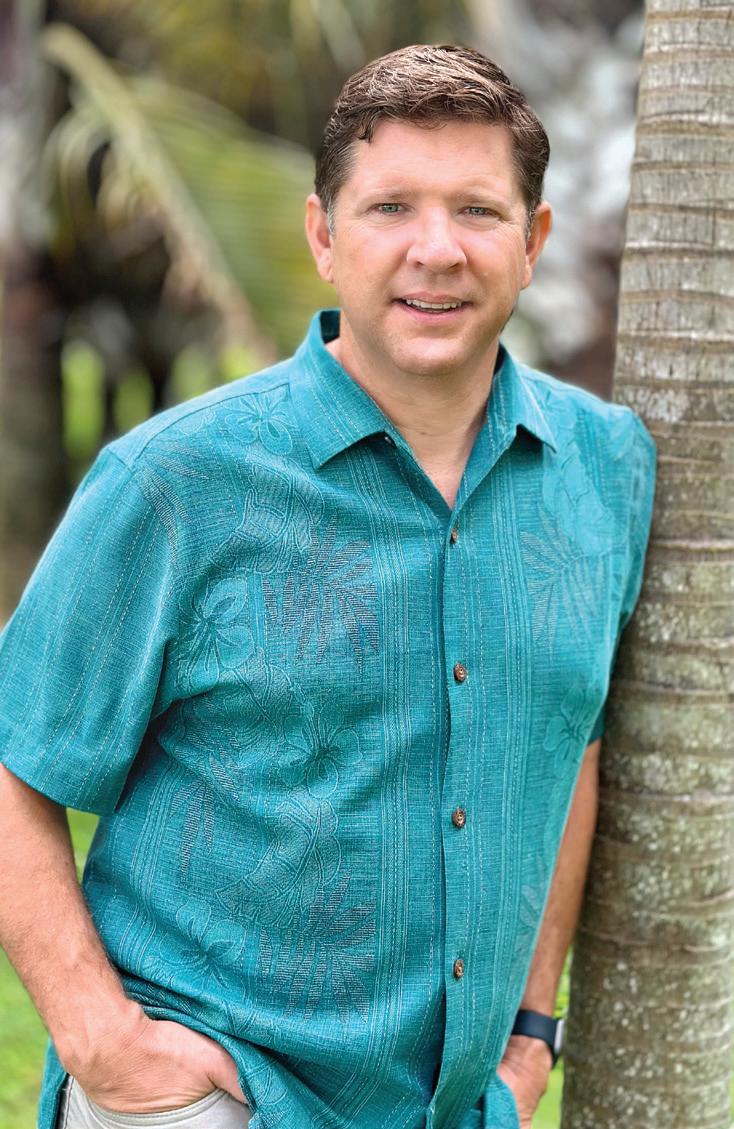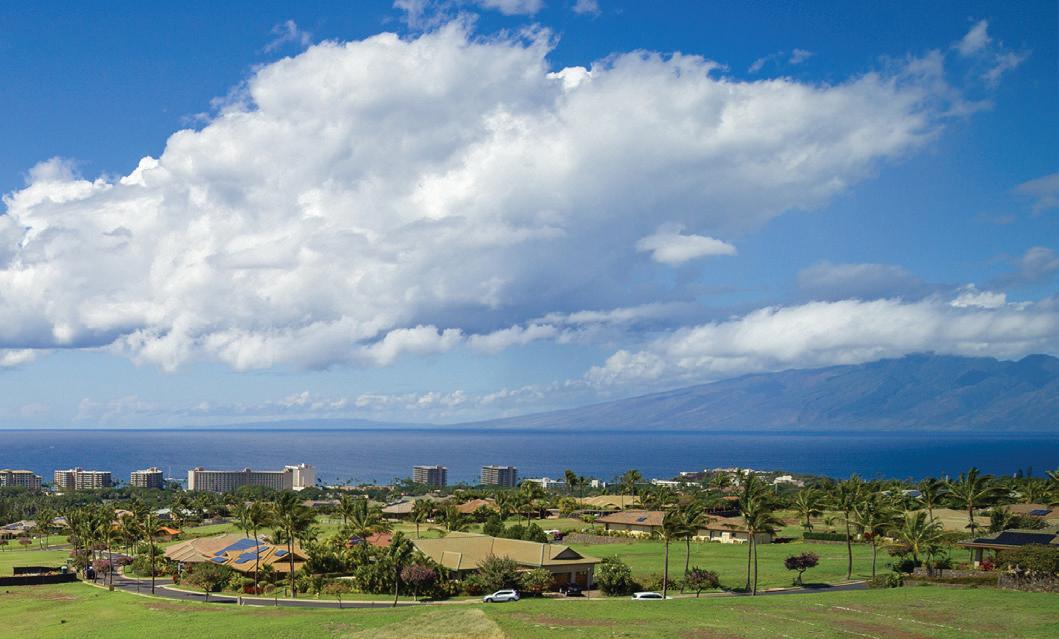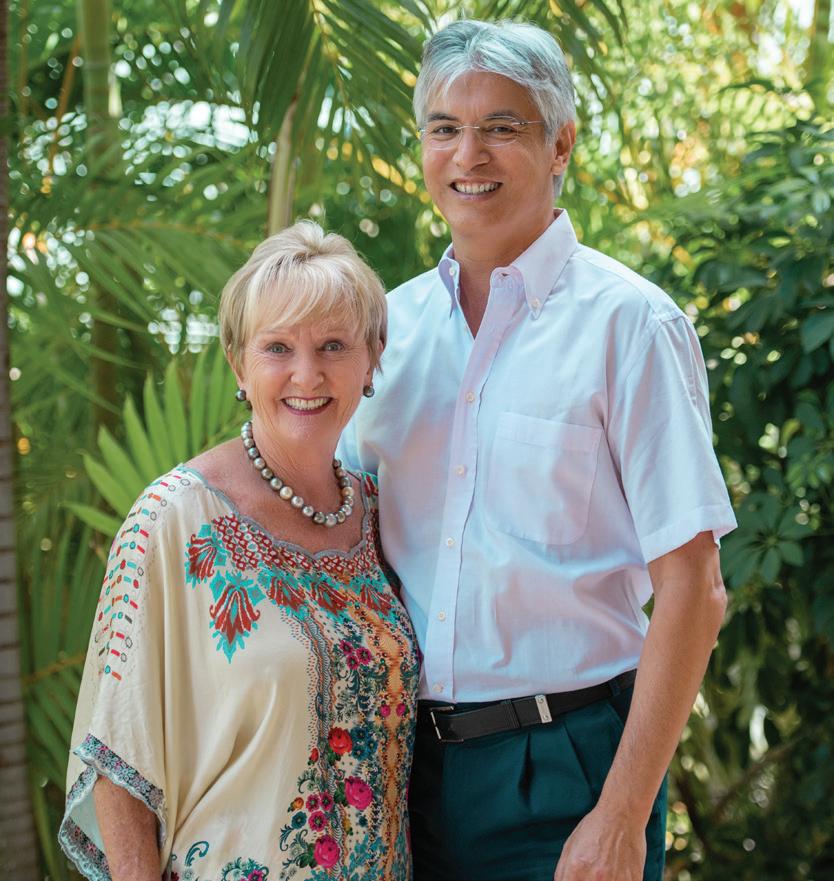
3 minute read
E mālama i nā holoholona lōhiu (Care for wildlife)
WILDLIFE PHOTOGRAPHY is a business of long hours and patience. As legendary Maui-based whale photographer and co-founder of the Whale Trust, Flip Nicklin, told me over lunch recently, on his dozens of National Geographic photo shoots, his published photos often came from just one lucky day in a 30-day assignment – the benefit of showing up and being ready.
Also renowned and legendary is our magazine’s photo editor, Jason Moore, an accomplished underwater photographer and videographer, 100-ton U.S. Coast Guard Certified Captain, FAA certified drone pilot, SCUBA instructor and freediver.
Jason was freediving off the southern coast of Lanā‘i when he capture this issue's cover image of a pod of spinner dolphins on the ocean floor. A resident pod of 100 spinner dolphins to passed by Jason as he swam near the water's surface.
Jason clutched his camera, took a deep breath, descended 45 feet to the ocean floor and waited. Within minutes, nine dolphins broke away from the larger pod and swam down to investigate him. Dolphins are curious animals; they have a similar brain-to-body mass as humans. If dolphins could talk, Jason believes we might discover they know humans can't hold our breath very well. “So, when we do for a long time, they get curious," he said.
As Jason waited on the ocean floor, the pod made one low pass from left to right, then disappeared from his sight into the sapphire blue waters.
One dive, one pass, one photo. Like Flip, Jason showed up and was ready.
Here at Maui Nō Ka ‘Oi Magazine, Jason reviews thousands of photos every month submitted by photographers from around the world who explore and document human-life and wildlife in Maui Nui. He looks for captivating and beautiful photos. But for wildlife, he also looks for shots made ethically and according to state and federal laws.
It is illegal, for example, to pursue or approach dolphins and humpback whales without a research permit from the National Oceanic and Atmospheric Administration. Flying a helicopter or airplane within 1,000 feet (or a drone within 300 feet) also is illegal.
So, when we get ready to publish a story like the spinner dolphin feature in this issue, we research our selected images to ensure our photographers created the photographs legally and ethically. For us, ethically means photographing animals in their natural course of life – no chasing, baiting or setting up artificial situations, which “cheat the art of photography,” Jason says.
With brains no larger than the mass of peanut, the honu (Hawaiian green sea turtle) deserves our respect, too. It is a federal offense to harm, harass or even touch a sea turtle. Though endangered, spend any time snorkeling many of Maui’s beaches and you’re bound to come across a honu.
Such was the case one night at my neighborhood beach, Waihe‘e Beach, when I emerged from the water following an after-work snorkel. Tuckered from a day of foraging on the coral, a green sea turtle had pulled itself up onto the beach for a nap. But instead of resting, two people where standing a few feet way shooting photos and videos with their cell phones.
The turtle was agitated and beginning a retreat to the water. I immediately walked over to the couple and told them that the honu is protected. According to the law, they need to stay at least 10 feet away. Please, let the tired creature rest, I told them.
The couple had just landed on Maui for their first trip here (a “vacation of a lifetime”). After a long flight, they were excited to be here and just wanted to put their feet in the water. Seeing a turtle was a bonus. They were grateful, truly, that I interceded; they took no offense.
We walked together on the beach and back to the parking lot, talking the whole way about their trip, their plans for the week, and about the importance of the land and animals to our island culture.
Maui is a beautiful place: paradise. Enjoy it, but don't consume it. Respect the land and the animals.
These lessons are deeply entwined with the island culture and shared wisdom. We at the magazine know when we share these lessons with visitors from around the world – in person and in photographs – little by little, the world becomes a better place.












